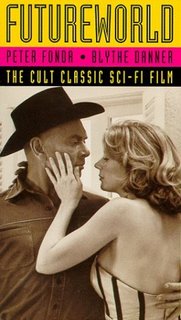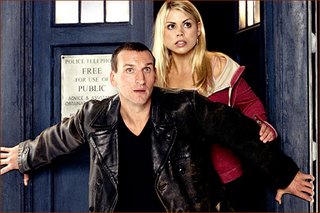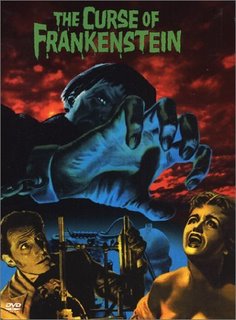
FUTUREWORLD is one of those kinds of movies. I'm going to have to define a term for them, but they're the ones where, if this happens to be on TV, and I'm flipping through channels, I will gladly stop and watch regardless of circumstances. Films like JAWS, Carpenter's THE THING, I'm sure you have your own lists. For me they tend to be slick, well-made, not-too-demanding genre thrillers, not emotionally draining or too intellectually challenging, but solid entertainment. "Comfort movies", perhaps. Steakhouse entertainment, straightforward, well-done, not too fancy. I dunno.
FUTUREWORLD is the sequel to Michael Crichton's WESTWORLD, the mildly famous 1973 sci-fi thriller about Delos, a futuristic amusement park where patrons get to act out heroic fantasies with a supporting cast of robots, always triumphing over evil gunslingers and bedding robot women (which apparently didn't sound as creepy back then), until finally the robots get tired of losing and start killing the guests. It's known basically for the image of Yul Brynner as the robotic Gunslinger shooting one of the main characters before pursuing the other through the park's lower levels. It was memorable but even by action-thriller standards didn't make a whole lot of sense- why does the robot Gunslinger have a real gun to start with? Why does anyone in the park have a real weapon and not a prop? (Even assuming the "nothing can go wrong" stance of Delos management, which I'm sure the insurance company LOVED hearing, and a scene where the guns were shown to have special bullets that avoided heat i.e. warm bodies, would it not just be cheaper to use fakes, have some squibs and blood bags on the robots so they can "die" convincingly with only routine maintenance needs, etc.?) The sequel actually manages to explain the huge logical gaps of the first movie, while telling a substantially different story.
Peter Fonda is a newspaper reporter who gets a tip about something suspicious behind the re-opening of Delos, from a contact who conveniently dies before he can give any real information. Fonda's character meets up with an old flame turned TV anchor (played by Blythe Danner), and they're both assigned to take a look at the new park and hopefully generate some good publicity to offset the whole "a bunch of people died here once" problem. They're joined by a batch of world leader types (the resort being the ultra-pricey sort, which it would have to be) and a hickster game show winner, and led around by an uncomfortably friendly Delos executive played by Arthur Hill (who was in the film version of Crichton's ANDROMEDA STRAIN.) Fonda starts getting a little suspicious of the goings-on at the new Delos, and drags Danner along investigating the park's shadowy underbelly.
FUTUREWORLD was produced by Samuel Z. Arkoff at American International, and does feel a bit cheaper than its predecessor (though it apparently cost more), with a made-for-TV quality. It has its own gaps in logic, of the conventional movie variety- the tipster who has information but for some reason can't give it over the phone, the protagonists easily sneaking around a high security installation, etc. I found these a bit less glaring, if only because they've almost become genre conventions. The one major flaw in the film is a bizarre "dream machine" sequence featuring Danner's character which only really exists as a pretext for an extended cameo by Yul Brynner as the Gunslinger (who was again mentioned prominently in advertising, and still is on some of the various video covers.) It starts out interestingly enough but finishes with a bizarre romantic interlude involving red ropes and dancing and Brynner being utterly expressionless.
On the upside, this is basically just a fun, very old-fashioned thriller, with Fonda and Danner exhibiting a cute 1940s chemistry. The main actors are all pretty good, and Stuart Margolin (Angel on THE ROCKFORD FILES) has an amusing part as a plumbing technician who lives with a faceless malfunctioning robot. If that sounds goofy, it is, and that's probably part of the film's charm- there are a lot of odd, quirky little things going on that make watching the picture a fun experience. There's a sequence where Fonda and Danner face off with doubles of themselves who have all the original's memories. As the two Danners train guns on each other, the clone remarks, "It's a good thing father taught us how to shoot. Maybe we shouldn't have worried so much about whether he loved us." And there's the theme music, a nice five-note motif played repeatedly on strings. (The score, by Fred Karlin, seems to have been done with a fairly small orchestra, and is surprisingly effective.)
There's no Region 1 DVD of this film just yet, and no apparent release planned. It does show up on TV occasionally, most recently having popped up on one of the Showtime networks. Watch it and tell me I'm not crazy. It's a fun little flick.
Directed by Richard T. Heffron
Written by George Schenck and Mayo Simon
Grade: B
 X-MEN: THE LAST STAND is perhaps better than it should have been, but not quite as good as it could have been. A lot of potentially-negative buzz swirled around the film to start, based on a leaked draft of the script, the fact that director Brian Singer was no longer on board, and that after a period of dithering around, the studio hired Brett Ratner to fill in. Ratner's filmography, which includes the 2 RUSH HOUR movies and RED DRAGON (which I liked a lot more than other people did), didn't really suggest he would be anything more than a hired gun, and because of the delays the film's production was probably hurried a bit to meet the all-important Memorial Day release deadline. It's definitely a rushed film, and there are places where it doesn't work, but other parts are really quite good, and the end result is satisfying.
The plot centers around the development of a "cure" for the mutant gene which gives the X-Men, their enemies the Brotherhood, and all mutants in general their power. The government rubber-stamps the vaccine into production, and hundreds of mutants who'd like to fit into normal society line up. But Brotherhood leader Magneto (Ian McKellen) sees this as the first step towards forced "cures" and the eradication of mutants as a whole, and starts a war to stop the cure gaining any ground. The X-Men, who fight for mutant rights, are caught in the middle- they don't want to hurt or dominate mankind the way Magneto does, but the idea of being "cured" doesn't sit well with many of them. In the meantime, Jean Grey (Famke Janssen), who apparently died in the last film, is reborn as a more powerful, nigh-omnipotent entity who turns on the X-Men and manages to kill a couple of key members before joining Magneto's cause.
X-MEN: THE LAST STAND is perhaps better than it should have been, but not quite as good as it could have been. A lot of potentially-negative buzz swirled around the film to start, based on a leaked draft of the script, the fact that director Brian Singer was no longer on board, and that after a period of dithering around, the studio hired Brett Ratner to fill in. Ratner's filmography, which includes the 2 RUSH HOUR movies and RED DRAGON (which I liked a lot more than other people did), didn't really suggest he would be anything more than a hired gun, and because of the delays the film's production was probably hurried a bit to meet the all-important Memorial Day release deadline. It's definitely a rushed film, and there are places where it doesn't work, but other parts are really quite good, and the end result is satisfying.
The plot centers around the development of a "cure" for the mutant gene which gives the X-Men, their enemies the Brotherhood, and all mutants in general their power. The government rubber-stamps the vaccine into production, and hundreds of mutants who'd like to fit into normal society line up. But Brotherhood leader Magneto (Ian McKellen) sees this as the first step towards forced "cures" and the eradication of mutants as a whole, and starts a war to stop the cure gaining any ground. The X-Men, who fight for mutant rights, are caught in the middle- they don't want to hurt or dominate mankind the way Magneto does, but the idea of being "cured" doesn't sit well with many of them. In the meantime, Jean Grey (Famke Janssen), who apparently died in the last film, is reborn as a more powerful, nigh-omnipotent entity who turns on the X-Men and manages to kill a couple of key members before joining Magneto's cause.
 Whether or not this is intended as the last X-Men movie is... not quite clear. The studio's hedging its bets here- the movie's called "The Last Stand", but at the same time it introduces a number of new mutant characters just as it conveniently disposes of several figures from the first two movies. Halle Berry's Storm, a minor presence in the first two movies, becomes a major player here, perhaps the result of backstage negotiations- the movie version of the character lacks the complex history of the comics figure, or really any backstory at all, so it's a bit odd to have her at the forefront all of a sudden. She gives an okay performance, mind you, but it's a bit odd. Meanwhile, Cyclops, played by James Marsden (who is in Singer's SUPERMAN RETURNS, released by a rival studio no less, so you can imagine the potential resentment) is killed offscreen in the early portion of the film, in what is the film's biggest misstep. It's obvious that the character is being written out, not for dramatic effect but because the actor was busy. Meanwhile, X-fans will welcome the screen incarnations of Juggernaut (Vinnie Jones), Kitty Pryde (Elliot Page), and Colossus (Daniel Cudmore), as well as cameos by RUSHMORE's Olivia Williams as non-mutant scientist Moira McTaggert and GREY'S ANATOMY's Eric Dane as Multiple Man. The studio's closing a door, opening a window, and maybe leaving the key out.
The film does feel rushed plotwise. The basic story makes sense, it's quite compelling really, but there are those little nagging questions that come up. Minor plot holes and details that are brushed over a bit too quickly. Mentioning all of them would spoil things rotten, but in vague terms, the resolution is too quick and doesn't fully resolve the questions raised by the beginning- indeed, in terms of the vague political and thematic questions raised by the "mutant cure", it seems at first to fall in an uncomfortably pro-conformist position, arguing that the problem with mutant-human relations is just Magneto and his gang. On reflection that's not quite what was intended and not quite what's laid out, but the lack of detail makes it difficult. Certainly, if it is meant to be the end of the series, it's not. It doesn't resolve the basic conflict in any substantial way, which would be fine if they planned to get back to it later. Who knows. The "Evil Jean" plotline, lifted from the famous "Dark Phoenix" storyline from the comic books, works somewhat less well- it's interestingly plotted, but doesn't integrate into the main action. (The character is billed as "Phoenix" in the credits, but doesn't call herself that or get called that or do the whole flaming-bird-avatar thing that the comics version did, so she's still basically an insanely powerful telekinetic person.)
But the film does work on the level of its characters, which is a huge point in its favor- especially to comics fans such as myself. The performances are strong all around- Patrick Stewart and McKellen are as great as usual, Hugh Jackman's take on Wolverine is identifiable and likable (a bit of a hard job considering how overexposed the character is in comics, and how he spawned so many annoyingly badass imitators,) and Kelsey Grammer is uncannily fitting as the furry blue Beast, aka Dr. Hank McCoy. Ratner does seem to be able to elicit good performances from good actors, which isn't the rarest of assets for a director, but there you go. The action is also pretty effective, maintaining the chaotic and destructive feel of the first two movies.
On the whole, it's good, and I'm glad it managed to turn out well despite the skullduggery behind the scenes. But one wonders what might have been, and because of that one hopes this isn't all there is. Better than the first one, not as good as the second, a solid bit of entertainment.
Grade: B
Whether or not this is intended as the last X-Men movie is... not quite clear. The studio's hedging its bets here- the movie's called "The Last Stand", but at the same time it introduces a number of new mutant characters just as it conveniently disposes of several figures from the first two movies. Halle Berry's Storm, a minor presence in the first two movies, becomes a major player here, perhaps the result of backstage negotiations- the movie version of the character lacks the complex history of the comics figure, or really any backstory at all, so it's a bit odd to have her at the forefront all of a sudden. She gives an okay performance, mind you, but it's a bit odd. Meanwhile, Cyclops, played by James Marsden (who is in Singer's SUPERMAN RETURNS, released by a rival studio no less, so you can imagine the potential resentment) is killed offscreen in the early portion of the film, in what is the film's biggest misstep. It's obvious that the character is being written out, not for dramatic effect but because the actor was busy. Meanwhile, X-fans will welcome the screen incarnations of Juggernaut (Vinnie Jones), Kitty Pryde (Elliot Page), and Colossus (Daniel Cudmore), as well as cameos by RUSHMORE's Olivia Williams as non-mutant scientist Moira McTaggert and GREY'S ANATOMY's Eric Dane as Multiple Man. The studio's closing a door, opening a window, and maybe leaving the key out.
The film does feel rushed plotwise. The basic story makes sense, it's quite compelling really, but there are those little nagging questions that come up. Minor plot holes and details that are brushed over a bit too quickly. Mentioning all of them would spoil things rotten, but in vague terms, the resolution is too quick and doesn't fully resolve the questions raised by the beginning- indeed, in terms of the vague political and thematic questions raised by the "mutant cure", it seems at first to fall in an uncomfortably pro-conformist position, arguing that the problem with mutant-human relations is just Magneto and his gang. On reflection that's not quite what was intended and not quite what's laid out, but the lack of detail makes it difficult. Certainly, if it is meant to be the end of the series, it's not. It doesn't resolve the basic conflict in any substantial way, which would be fine if they planned to get back to it later. Who knows. The "Evil Jean" plotline, lifted from the famous "Dark Phoenix" storyline from the comic books, works somewhat less well- it's interestingly plotted, but doesn't integrate into the main action. (The character is billed as "Phoenix" in the credits, but doesn't call herself that or get called that or do the whole flaming-bird-avatar thing that the comics version did, so she's still basically an insanely powerful telekinetic person.)
But the film does work on the level of its characters, which is a huge point in its favor- especially to comics fans such as myself. The performances are strong all around- Patrick Stewart and McKellen are as great as usual, Hugh Jackman's take on Wolverine is identifiable and likable (a bit of a hard job considering how overexposed the character is in comics, and how he spawned so many annoyingly badass imitators,) and Kelsey Grammer is uncannily fitting as the furry blue Beast, aka Dr. Hank McCoy. Ratner does seem to be able to elicit good performances from good actors, which isn't the rarest of assets for a director, but there you go. The action is also pretty effective, maintaining the chaotic and destructive feel of the first two movies.
On the whole, it's good, and I'm glad it managed to turn out well despite the skullduggery behind the scenes. But one wonders what might have been, and because of that one hopes this isn't all there is. Better than the first one, not as good as the second, a solid bit of entertainment.
Grade: B





